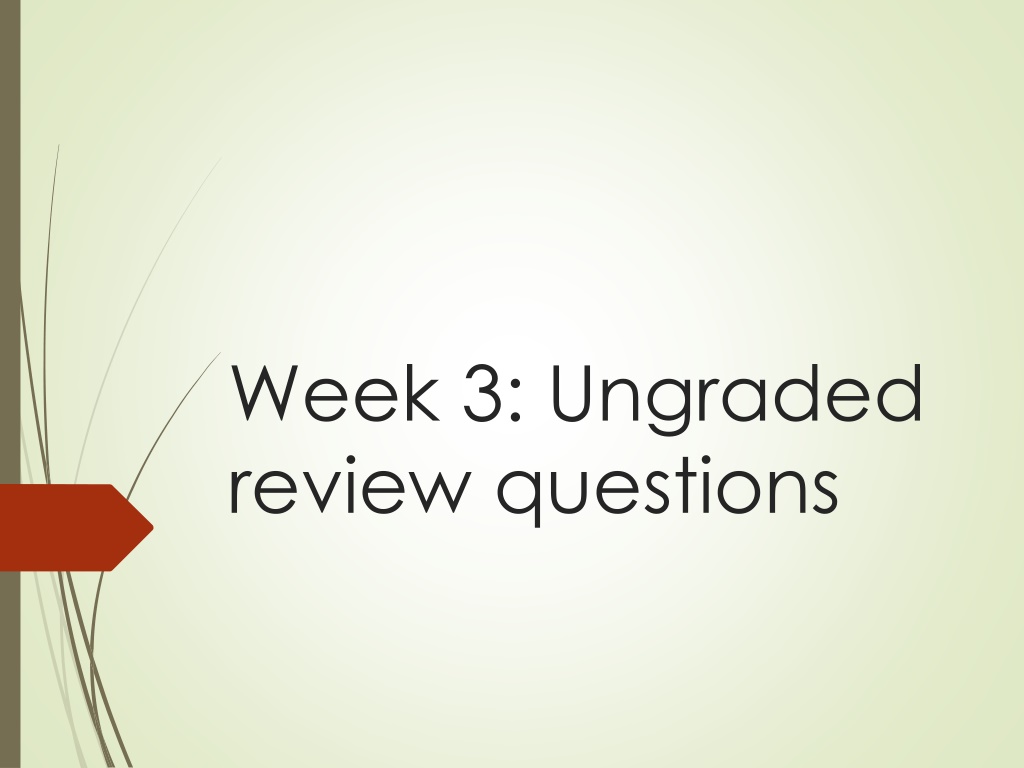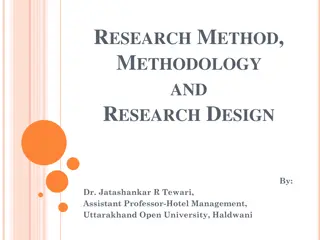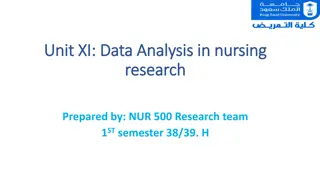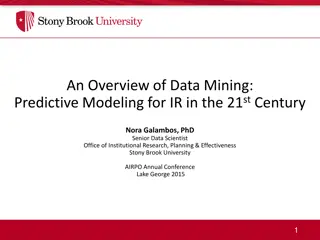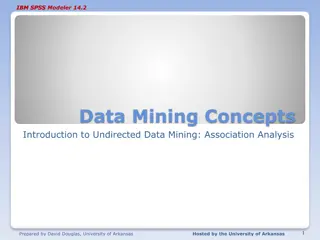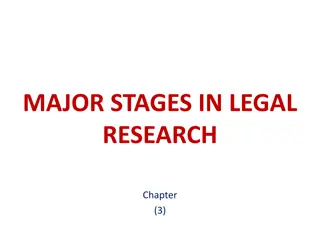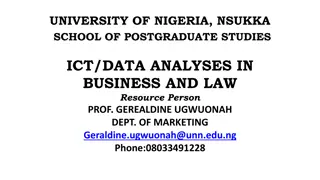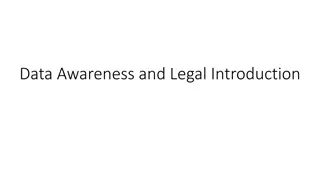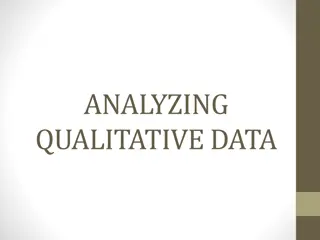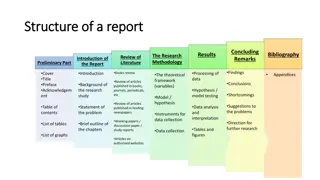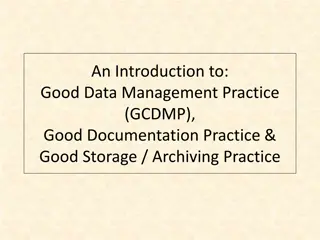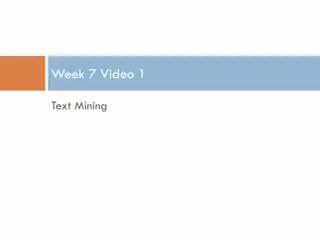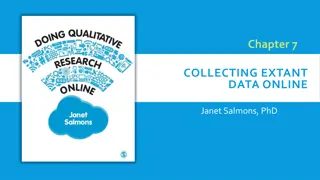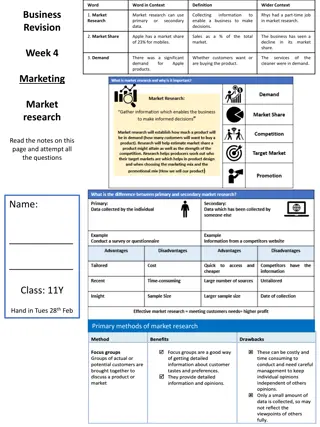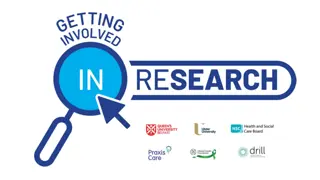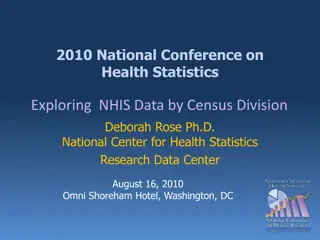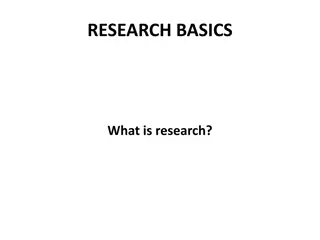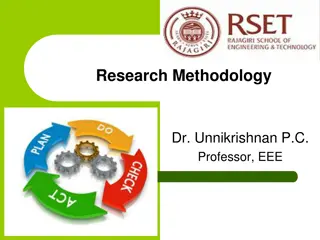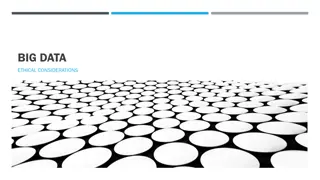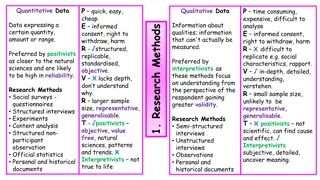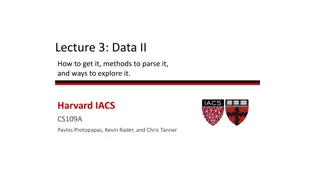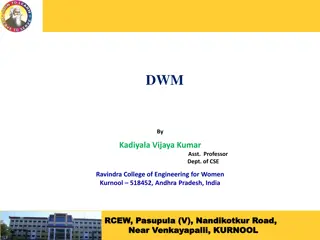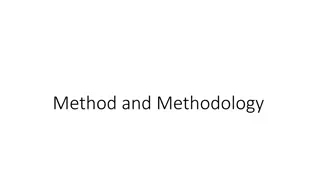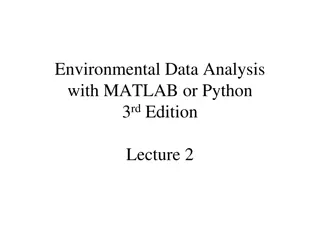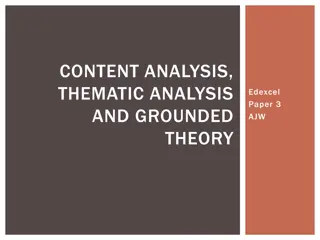Understanding Research Methods and Data Analysis
This review covers topics such as experimental classification, the comparison of non-experimental and experimental research, software features like JMP and SPSS, outlier handling in data analysis, and levels of measurement in statistical analysis.
Download Presentation

Please find below an Image/Link to download the presentation.
The content on the website is provided AS IS for your information and personal use only. It may not be sold, licensed, or shared on other websites without obtaining consent from the author. Download presentation by click this link. If you encounter any issues during the download, it is possible that the publisher has removed the file from their server.
E N D
Presentation Transcript
Week 3: Ungraded review questions
Can you explain your answer? Use your fingers to indicate your answer: 1=A, 2=B, 3=C, 4=D. For check all that apply, use your both hands. After viewing the question, show me your answer in 15 seconds. Next, turn to your neighbor and you have one minute to convince him/her that you are right.
According to the Canadian Rask Force for Preventive Health Care, an experiment is classified as a (Check all that apply): A. Level 1 study B. Level II-1 study C. Level II-2 study D. Level II-3 study E. Level III study
Today non-experimental research is considered as good as, or even better than experimental research. What is(are) reason(s)? A. Non-experimental studies have better external validity because they are done in the real world whereas experimental studies have difficulties in generalizing findings in a controlled setting to a naturalistic setting. Usually the sample size of experiments is relatively small but observational studies utilize big data analytics. Classical statistical procedures for experimental research relies on one analysis with one sample while data mining can be fine-tuned by machine learning. All of the above B. C. D.
Which of the following statement(s) is(are) false? A. JMP has a contextual menu for the user to determine what the next step is based on the initial output. B. JMP has a dynamic graphing environment for the user to ask what-if questions. C. SPSS has both contextual menus and dynamic graphics. D. The full name of JMP is John s Macintosh Program and therefore JMP works better in Mac OS.
You use Fit Y by X in JMP to inspect the data pattern. You suspect that there are some outliers. What would you do? (Check all that apply) A. Use a 97% density ellipse to verify which observations are outliers. B. Hide and exclude those outliers by left- clicking the suspicious observations in the data. C. Do a robust fit to down-weight the outliers D. Do a non-linear fit so that the regression line can go through he outliers.
In theory there are four levels of measurement, but in practical computing there are three only. What are they? A. Nominal, ordinal, interval B. Nominal, ordinal, ratio C. Nominal, ordinal, continuous D. Nominal, interval, ratio
You use Distribution in JMP to inspect the variable gender. According to the code book, 1 is male and 2 is female. You found that some participants report 3 . What would you do? A. Hide and exclude those observations B. Leave them intact. Use ANOVA (for three groups) instead of the t-test (for 2 groups). C. Use the names or IDs of the participants to find out their correct gender. Then fix the data. D. Ask the legal consul at APU
You use Fit Y by X in JMP to look at the variable test scores and gender. What you see is a dot plot showing the test score distribution by gender. What would you do next? A. Run a t-test from the contextual menu. B. Leave JMP. Use SPSS to run a t-test. It shows the t-test result right away. C. Examine whether the data structure meets the parametric assumptions, such as normality and equal variances. If yes, proceed to the t-test. If not, use non- parametric tests.
One of the parametric assumptions of the t-test and ANOVA is that the data are normally distributed. Why? A. Because the population is usually normal, we want a sample that can represent the population. B. The statement is incorrect. The normality assumption is not about the data. Rather, it requires that the residual is normally distributed. C. Because the sampling distribution is normal and we want the mean to be an unbiased estimator.
One of the parametric assumptions of the t-test and ANOVA is that the data are normally distributed. Why? A. Because the population is usually normal, we want a sample that can represent the population. B. The statement is incorrect. The normality assumption is not about the data. Rather, it requires that the residual is normally distributed. C. Because the sampling distribution is normal and we want the mean to be an unbiased estimator.
JMP cannot directly open a SPSS file. You need to save the SPSS file into the Excel format, and then open the Excel Spreadsheet in JMP. A. True B. False
Which of the following file format cannot be output by JMP? A. JMP report B. MS Word/RTF C.Excel D. HTML/Interactive HTML E. MP3/MP4
